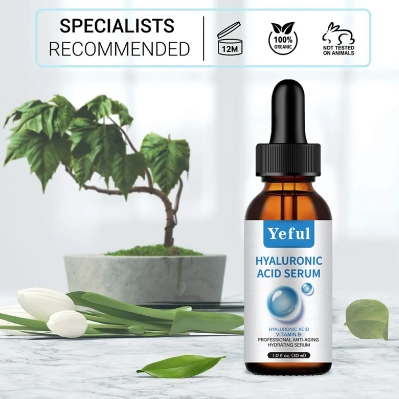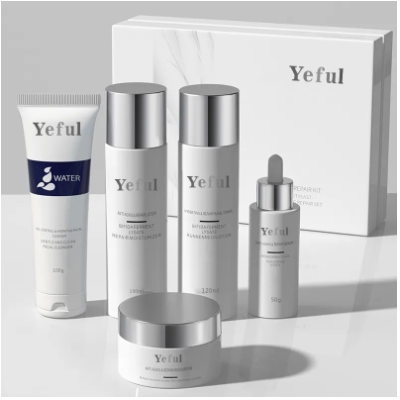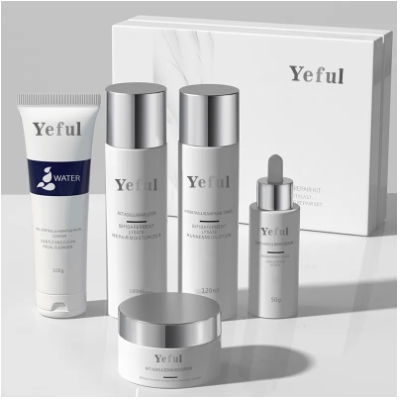Cross-Border E-commerce in the Cosmetics Industry: How to Expand into International Markets and Leverage Private Label Skincare Brands
- 2024-07-01 21:00:43
Introduction
The cosmetics industry is no stranger to the concept of cross-border e-commerce. With a growing global consumer base, fast-paced market expansion, and the rising demand for personalized products, the time is ripe for cosmetics brands to go beyond their domestic market and penetrate international waters. This article aims to provide an in-depth understanding of how to expand into international markets and leverage private label skincare brands for your benefit.
Understanding the International Cosmetics Market
Expanding your cosmetics brand into international markets is an excellent opportunity to increase sales, diversify revenue streams, and strengthen your brand's international presence. To succeed in the global cosmetics market, it's essential to understand the various factors that drive market growth, such as:
The preference for natural and organic ingredients: Consumers globally are increasingly concerned about the impact of synthetic chemicals on their health and the environment. This preference has led to a surge in demand for cosmetics formulated with natural and organic ingredients.
Technological advancements for customized solutions: Technological innovations, such as Artificial Intelligence and Machine Learning, are empowering personalization within the beauty and cosmetics sectors. Brands are now capable of creating unique formulations to cater to individual customers' specific needs, giving them an edge in a highly competitive market.
Changing consumer lifestyles: The increased focus on wellness, beauty, and self-care has led to greater consumer interest in cosmetic products that enhance both physical appearance and well-being.
The increasing demand for personalized products: Consumers are more educated about skincare and beauty, leading to a rise in demand for tailor-made solutions that cater to their unique preferences and concerns.
Evaluating Market Opportunities
Before entering an international market, it's crucial to conduct thorough market research to identify the most lucrative opportunities and the unique characteristics of each potential market. Here are some factors to consider when evaluating new market opportunities:
Market size and demographics: Understanding the target market size, age distribution, and disposable income levels will help you prioritize and plan your market entry strategies. Consider how economic factors, such as GDP and purchasing power parity, may influence cosmetic sales.
Consumer preferences: Evaluating the preferred product types, ingredients, and packaging styles will help you tailor your offerings to specific market needs. Consider cultural and regional variations, skincare routines, and local ingredients.
Competitive landscape: Studying the local and international brands present in the market, their offerings, and market share will provide insights into the competitive advantages you'll need to carve out a niche. Analyze the market leaders, their strategies, and how they maintain their positions.
Regulations and compliance: Familiarizing yourself with the local regulations, labeling requirements, and product registration processes will ensure seamless expansion. Compliance with laws related to cosmetics importation, packaging, and marketing will protect your business from legal complications.
Creating a Tailored Market Entry Strategy
Choosing the right market entry strategy is vital to your cosmetics brand's international success. Market entry strategies may include direct exporting, partnership with local distributors, establishing a joint venture, or acquiring a local competitor, among other options. The choice depends on your market research, internal capabilities, and overall business objectives.
Based on these factors, determine a suitable market entry strategy, considering the following:
Specific products and categories to launch: Decide which product lines and categories are best suited for the target market based on market research, customer preferences, and the competitive landscape.
Localization of marketing and promotional activities: Customize marketing strategies, including social media, PR, and advertising campaigns, to resonate better with local audiences.
Pricing adjustments and currency management: Alter the pricing based on local purchasing power, taxes, import duties, and other factors. In addition, consider currency fluctuations and establish a management strategy.
Distribution channel selection and logistics: Choose between traditional retail channels, online marketplaces, or direct-to-consumer (D2C) options while also considering shipping and transportation logistics.
Leveraging Private Label Skincare Brands
Private label skincare brands offer an attractive opportunity for expanding into international markets while reducing the risk compared to launching a new brand or product. The following are some benefits of leveraging private label skincare brands for your cross-border e-commerce efforts:
Cost savings and reduced development time: As the private label manufacturer handles product development, packaging, and production, you can focus on other aspects like marketing and sales, ultimately reducing development time and costs.
Customization and differentiation: Private label brands allow you to customize formulations, ingredients, and packaging to suit the local market demands and create a unique selling proposition. This flexibility enables you to create distinct and innovative products that cater to specific market segments.
Control over pricing and margins: Partnering with a private label manufacturer gives you better control over product pricing, allowing you to generate higher profit margins. You can offer competitive pricing while maintaining a higher level of profitability.
Lower risks: Since initial investments are lower, private labeling allows you to test the waters before investing significantly in building your global brand. In case of market shifts or regulatory changes, you can adjust your strategy with minimal financial repercussions.
Building an Effective Online Presence
To maximize the success of your cross-border e-commerce efforts in the cosmetics industry, fostering a strong online presence is crucial. Here are some strategies:
Create a user-friendly and localized e-commerce platform catering to different languages and payment methods. Offer localized content, including website copy, product descriptions, and online customer support.
Utilize search engine optimization (SEO) and content marketing to attract customers and drive organic traffic. Create quality blog posts, how-to guides, and video tutorials that inform, engage, and convert customers.
Leverage social media marketing and influencer partnerships to create buzz and increase brand visibility in the target markets. Select relevant influencers and content creators that resonate with your target audience, and collaborate
Procurement Advice From YEFULSKINCARE
When formulating skincare products, it is essential to consider specific procurement aspects during the ingredient selection phase of development. Experienced skincare manufacturers have in-depth knowledge of minimum order quantities and costs for various ingredients. Before formulating a product, these factors must be considered to ensure that only economically viable ingredients are selected.
Skincare manufacturers like YEFULSKINCARE have long-standing relationships with major suppliers, allowing them to leverage these networks when sourcing hard-to-find or obscure raw materials. This proves invaluable when ensuring timely procurement and cost-effective production runs.
In conclusion, partnering with YEFULSKINCARE offers numerous advantages to skincare companies looking to develop and launch successful product lines. Their industry experience, professional knowledge, state-of-the-art facilities, and commitment to cost-effective solutions make them an ideal choice for those seeking expert guidance and support through the product development process.




